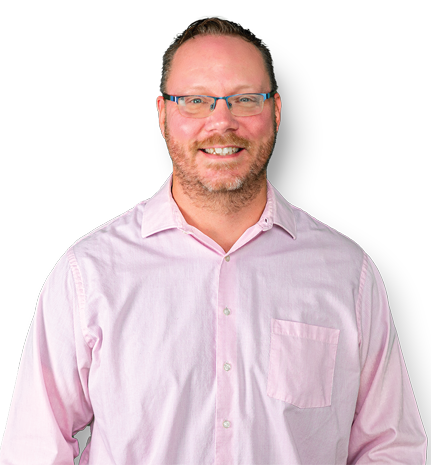Connecticut CPA Magazine Excerpt: Redirect Your Firm to the Future
July 01, 2022

By CTCPA Chair Michael Maksymiw Jr., CPA, Aprio Firm Foundation
Change the way you manage your time to enhance value, increase talent retention, and move toward expanded advisory services
Too often, many of us in our profession think from a scarcity mindset rather than an abundance mindset.
We think that clients, money, and talent are limited.
For the first time in our lives, there are more jobs than people.
Read that again to fully understand where we are. If every single person who wanted a job had one, there would STILL be job openings.
This means the demand for our services has never been higher. Basic economics says that when demand exceeds supply, the cost of a product or service increases. Therefore, with the abundance of work, it naturally follows that money should also be in abundance, as long as we make the necessary pricing changes.
The voice in the back of your head may have started shouting: “My clients won't accept a price increase!” Maybe, but here's some anecdotal data from #TaxTwitter. A couple dozen or more of our colleagues have implemented significant price increases (some in excess of 25%).
Do you know what happened at those firms, my friends? Fewer than 10% of clients left, and the ones that did leave were the aggravating, frustrating, soul-sucking stress creators we have wanted to fire since the first time we worked with them.
The hard part is being bold enough to put the same value on yourself as others put on you.
You can do it. You are worth it.
The pricing change is difficult to navigate mentally. You're trading the known for the unknown, which is scary. Think of this: What is the risk of standing still versus the risk of moving forward?
As an example, if you raise fees 10%-20% and lose 10%-20% of your clients, your gross revenue is the same.
But – you gain at least 10%-20% of your time back. You can use that reclaimed time to work on a future-oriented firm strategy. You can use the time to talk to your best clients about their business, and likely land a couple of new, exciting advisory projects.
You can use the time to take an extra vacation – rejuvenate your mind, body, and soul. You can use that time to focus on better, cooler, more exciting work (for your firm and for your clients).
You know you're worth it because you've never been busier. The tax code and accounting rules are ever-changing and have never been more complex. During the pandemic we showcased our ability to be client advisors first and technicians second.
We helped companies stay in business and pay their employees – which ensured that those families could continue to put food on their tables and keep a roof over their heads. You made a powerful impact in your community, and you are worth more than just the compliance you deliver.
Work, clients, and revenue are not scarce resources in today's climate. You can change the type of revenue you have with far less risk than any time in our profession's history.
Now is the time to move from compliance first to advisory first.
Historically, we offered services that met the needs of the many in order to have the widest swath of potential clients. However, our resources are limited, both in terms of time and talent, while clients are aplenty. With limited resources and an abundance of work comes the opportunity to redirect what we do with those resources.
Unpopular opinion time: Compliance is dying. It's not dead yet, but for those of us with 20+ years left in the profession, the landscape of compliance is going to change drastically. I think fewer people will need CPAs for their compliance because more and more of it will be automated by the same regulatory bodies that (almost) guarantee we are the ones who do the work now.
It is not a big leap from where we are today to seeing the IRS automating tax preparation for the majority of the taxpayers, or the SEC (and similar bodies) requiring blockchain-enabled accounting systems that allow for continuous, automatic, real-time auditing.
Rather than throw our limited resources into the part of our profession that has the shortest life, let's put those resources to use in the areas where the bots can't touch us: human-to-human interaction. In other words, advisory services.
To be transparent, we are already performing advisory services for many of our clients – we're just not calling it that, and we're not leading with it. We lead with the compliance and then tell the client we can also do advisory. We need to switch the order and make compliance the “add-on” part of our offerings.
Earlier, we said we would utilize some of our time we reclaimed to talk with our best clients about how else we could help. And those conversations would lead to interesting, cool, impactful projects. As we do more of those for our best clients, we gain the confidence and experience to lead conversations with other clients and prospects differently. We listen to what their real wants and needs are.
As an example: They need a financial statement for the bank. Why? They're taking on new debt for an expansion. Why? A segment has grown quickly and they want to capture more of it. Now we're talking! This is awesome news.
The questions change: What issues have you run into? Where can we best support you? Do you need forecasts, industry projections, M&A analysis for a complementary acquisition? These projects are fun, interactive, lucrative, and don't all have the same deadline!
By reclaiming your time, you can choose the new clients and projects you spend your resources on. Eventually you can replace more of the compliance projects with advisory-first clients. You can begin to turn into an advisory-first practice.
Tackling talent scarcity is imperative.
Talent scarcity is a real problem, and it's not going to get better soon. There are fewer accounting graduates, fewer CPA Exam takers, and a boatload of retiring knowledge. Talent is leaving the profession because the hours and effort historically expected are insane and not worth the level of compensation.
While we may disagree with that individually, the fact remains that people are voting with their feet – and they're walking out of the profession, not into it. They place a very high value on their time, including their personal/family time.
In this job market, they are in a position to have their demands met. Add in the number of retiring folks and smaller pipeline of incoming professionals, and this is not a trend – this is the new normal.
However, there is opportunity in this threat. Here's the cool part: This has happened before and solutions were found, just not in our industry. Which industry, you ask? Farming.
A hundred years ago, farming made up roughly 40% of the labor force. Today it is less than 1%, yet the food production is many multiples higher than it was a hundred years ago. How did the farming industry do it? Technology and automation. Two words that we have heard over and over again in our profession. The farming labor force was replaced by machinery that could do the work of tens to hundreds of humans.
We are there now with technology available to us today, including robotic process automation (RPA), digital workers (bots), and a host of others. We can use them to supplement the fewer number of humans we have available. And we can deploy our human resources in more lucrative ways and on more exciting advisory projects. We can mitigate the labor scarcity through technology and automation.
To be fair, fighting the war for talent with technology does not directly free up your time. However, by utilizing technology and automation, you allow the firm to be intentional about where it spends its time.
You can eliminate mundane, repetitive tasks, and replace them with review and analysis of those tasks. You elevate what your people are doing, and their role becomes advisory by default because they are looking at the output to find meaning for the client.
Reclaim your time by redistributing it to higher value services that your staff enjoy working on. You and your team can choose the clients and projects that bring the most value to the firm, and the most value to you personally. Turn this threat of a talent shortage into an opportunity to maximize your resource deployment and redirect your firm to the future.
How we've historically filled capacity that technology has created, and how we should look at filling that capacity as a future-oriented firm
In the hundred-plus years of our profession, we have consistently filled the time that technology and automation have created with more clients and work. In the past, clients and work have been scarce. This approach made sense. Many firms were very successful by following it.
However, now is different than the past. Stop filling the capacity with more work. Every time we say yes to a new project, we say no to something that is vital to our business's success. And, yes, we are running a business. It is time that we started filling the time with high priority, future-oriented items. To change where we are going, we have to change our behavior.
Utilize the capacity you create to spend some significant time working on your firm's strategy to evolve into a future-oriented firm. The strategy sessions may include topics such as technology stacks, automated workflows, new employee benefits, non-geographic talent retention and attraction strategies, new service lines clients want, firm profitability, and succession plans, among others.
While there is a lot on this list, there are resources to help you. You can utilize a business/leadership coach to facilitate firm retreats and regularly scheduled accountability check-ins. Many of these coaches can also help with change management, which is a very real, human issue that must be a part of any strategy.
To connect strategy with talent retention, bring your team into the firm strategy sessions with some of the capacity you created for them. Let them know you value their opinion, that they will be here to execute and drive the strategy. That helps your succession plan because they are your succession plan. They're more engaged in the firm direction because they have a say in it.
Ultimately, the major issues facing the profession are still issues in the profession because we lack the time to address them. Take the steps to reclaim your time, so you can work on your business. For the first time, work, clients, and revenue are not scarce resources. You can change the direction of your firm with far less risk than any time in our profession's history. Use this time of prosperity to redirect your firm to the future.

Michael Maksymiw Jr. is CTCPA Chair and leader of Aprio's Firm Foundation, an alliance of small and midsize CPA and advisory firms. Mike is passionate about the future of the profession and helping firms evolve into future-oriented organizations that will continue to serve their communities. A change agent for the profession who impacts progress on key issues facing the profession, Mike focuses on women/family initiatives, DEI&A, work-life harmony, and value rather than time. He can be reached at Mike.Max@aprio.com.
